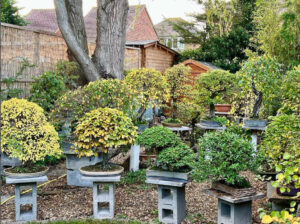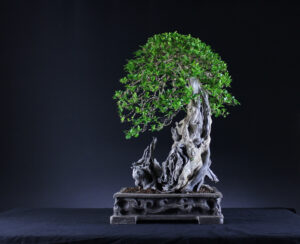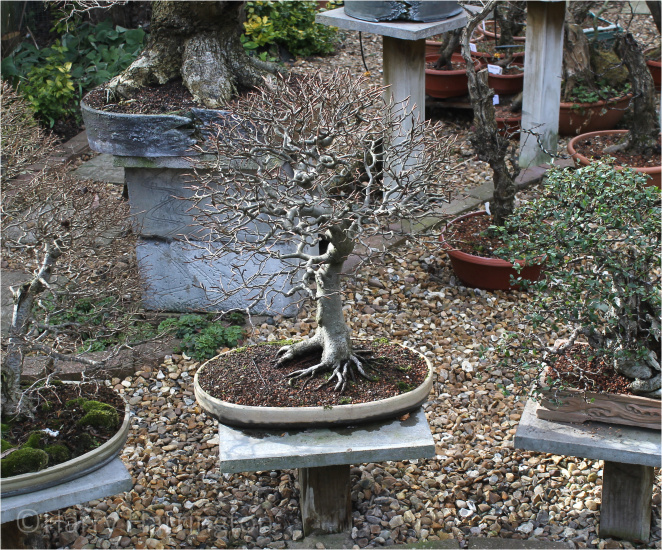
My Fagus sylvatica/European Beech bonsai pictured in my garden in early March 2018. This tree will be familiar to those that have read my first book “Bonsai Inspirations 1” as its initial development features heavily within the book.
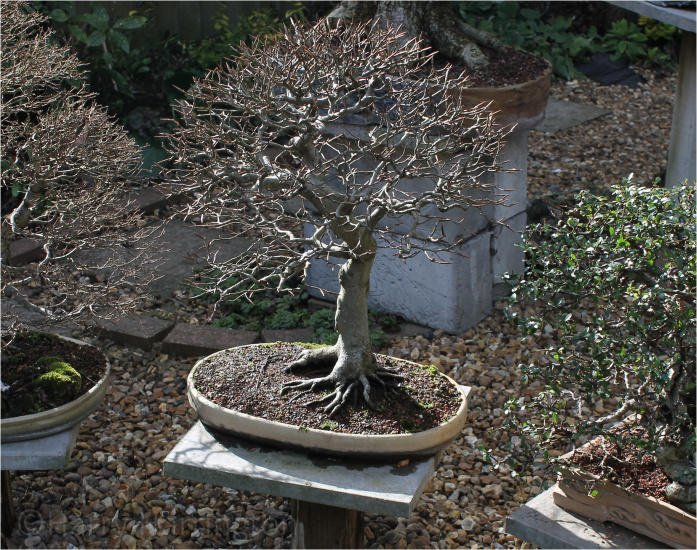
Over the years, as the trunk and in particular the nebari (surface roots) had swelled with age, gaps in the nebari had become more prominent.
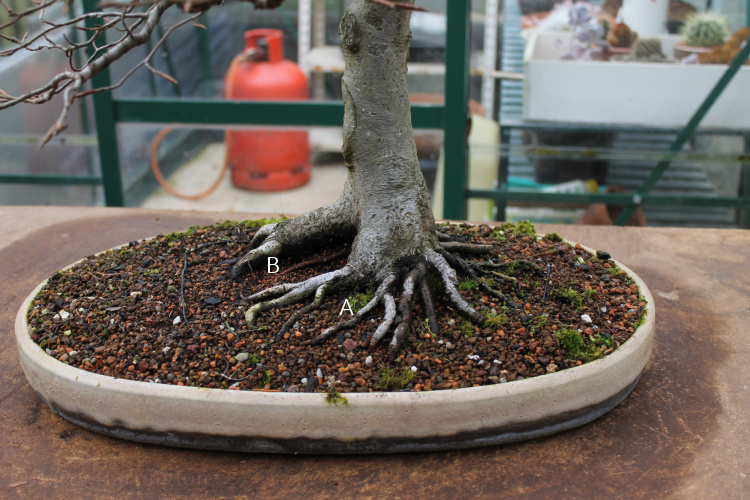
Although pleasing in appearance, the nebari could be improved by addressing these gaps (marked “A” and “B” in the image above).
In the same way that the branch structure of a deciduous bonsai can be slowly improved over the years, so can the rootsystem and nebari.
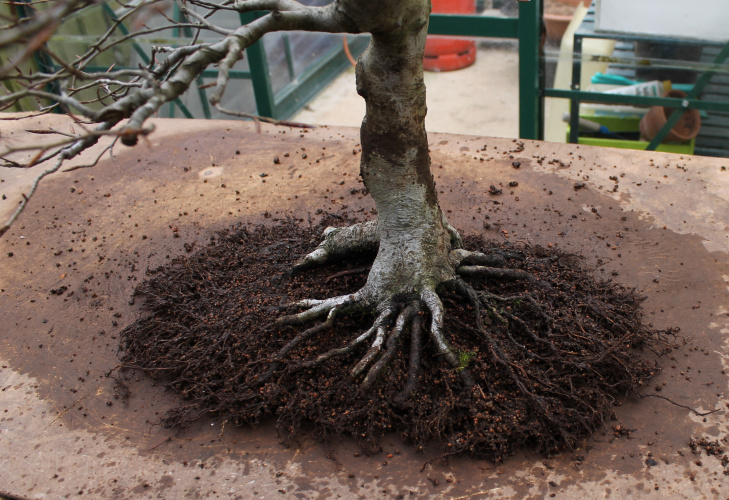
March 2018: Repotting the Beech.
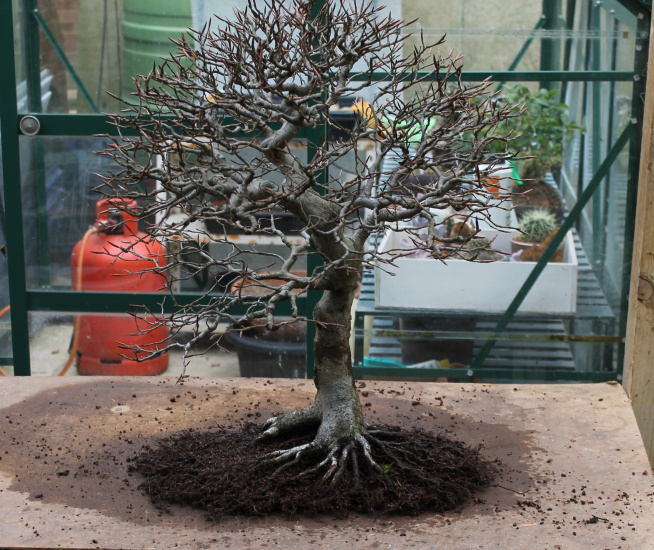
After gently combing-out the old soil, it is possible to see how shallow the roots of this tree are after many years of cultivation.
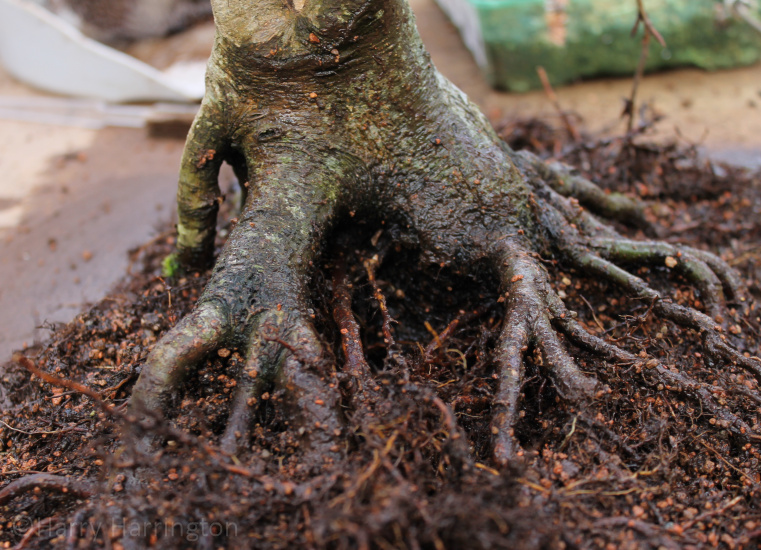
The rootball as seen from the left-hand side. It is sometimes possible to find vigorous young roots that have emerged from below the level of the nebari. As they are, they are too low to be part of the nebari itself. However, they can be lifted upwards and pinned into position, effectively being grafted into place while still attached to the tree.
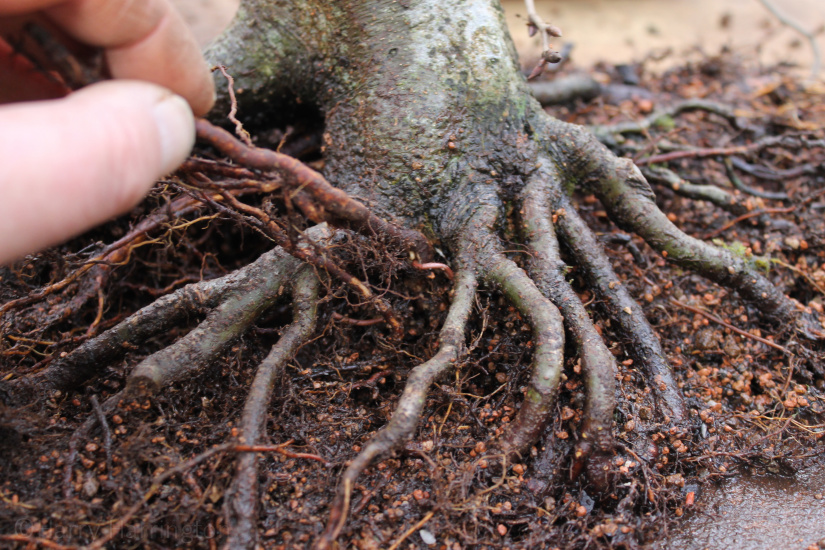
This vigorous root was pinned into the nebari (at position “A”). A small wedge was cut into the bark and cambium of the tree, and the root held tightly against it with a pin (in this case, made from a length of copper wire).

The root was then bent downwards……….
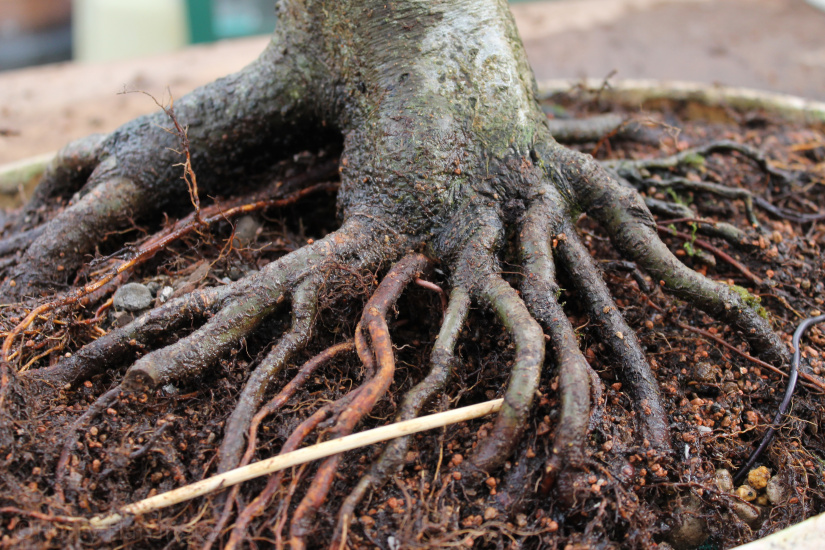
…….and anchored into position using a wooden stick. As the wedge-shaped channel in the tree heals around the pinned area of the root, they will naturally graft together over the coming years. (For further reading please see Approach Grafting Roots for Better Nebari)
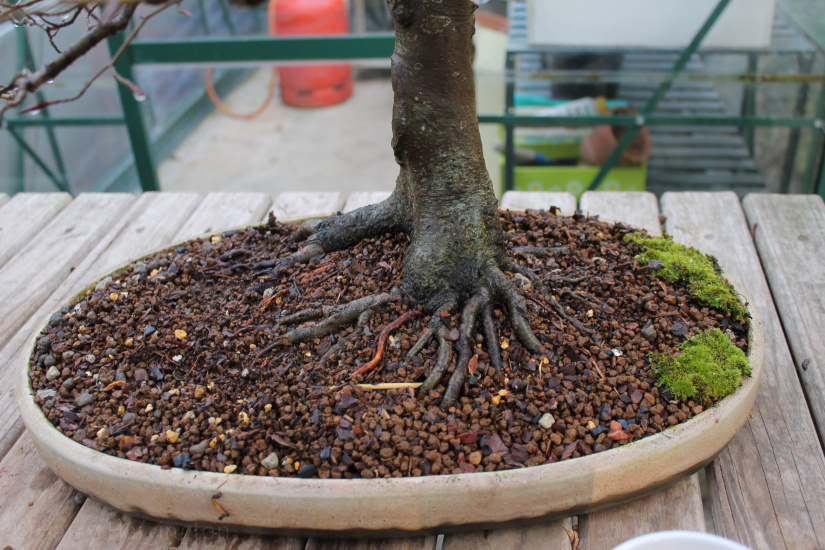
After returning the tree back into its pot for another couple of years. Three other roots were grafted into new positions (in area “B”). Although thinner, these roots will be allowed to grow freely until they thicken up to be of appropriate size.
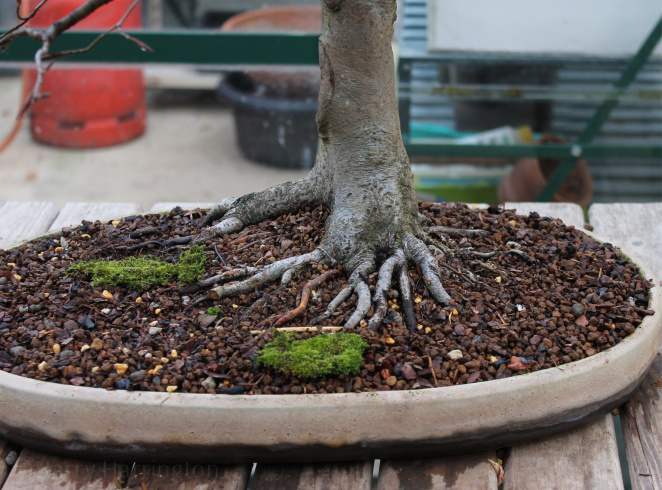
The completed work.

